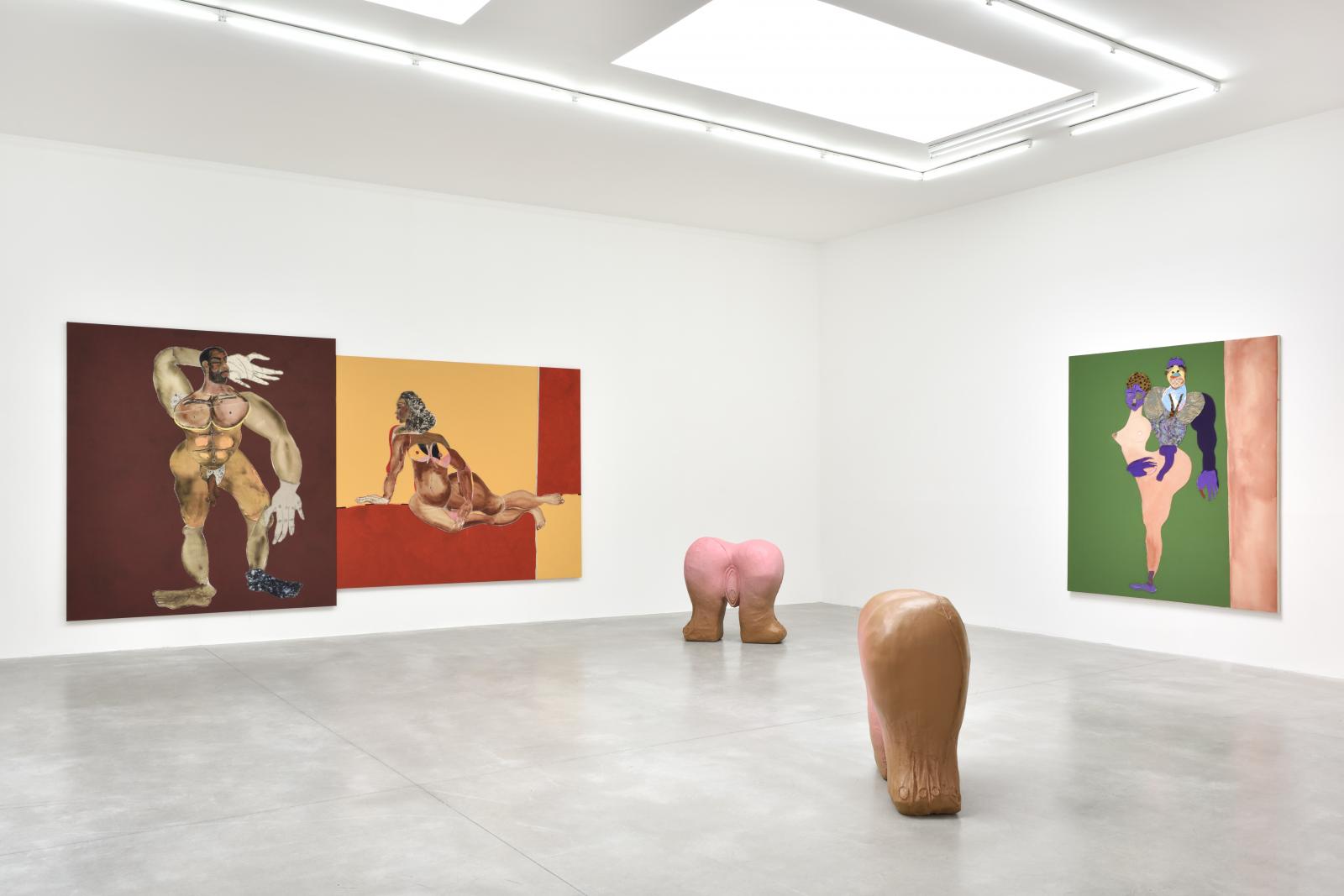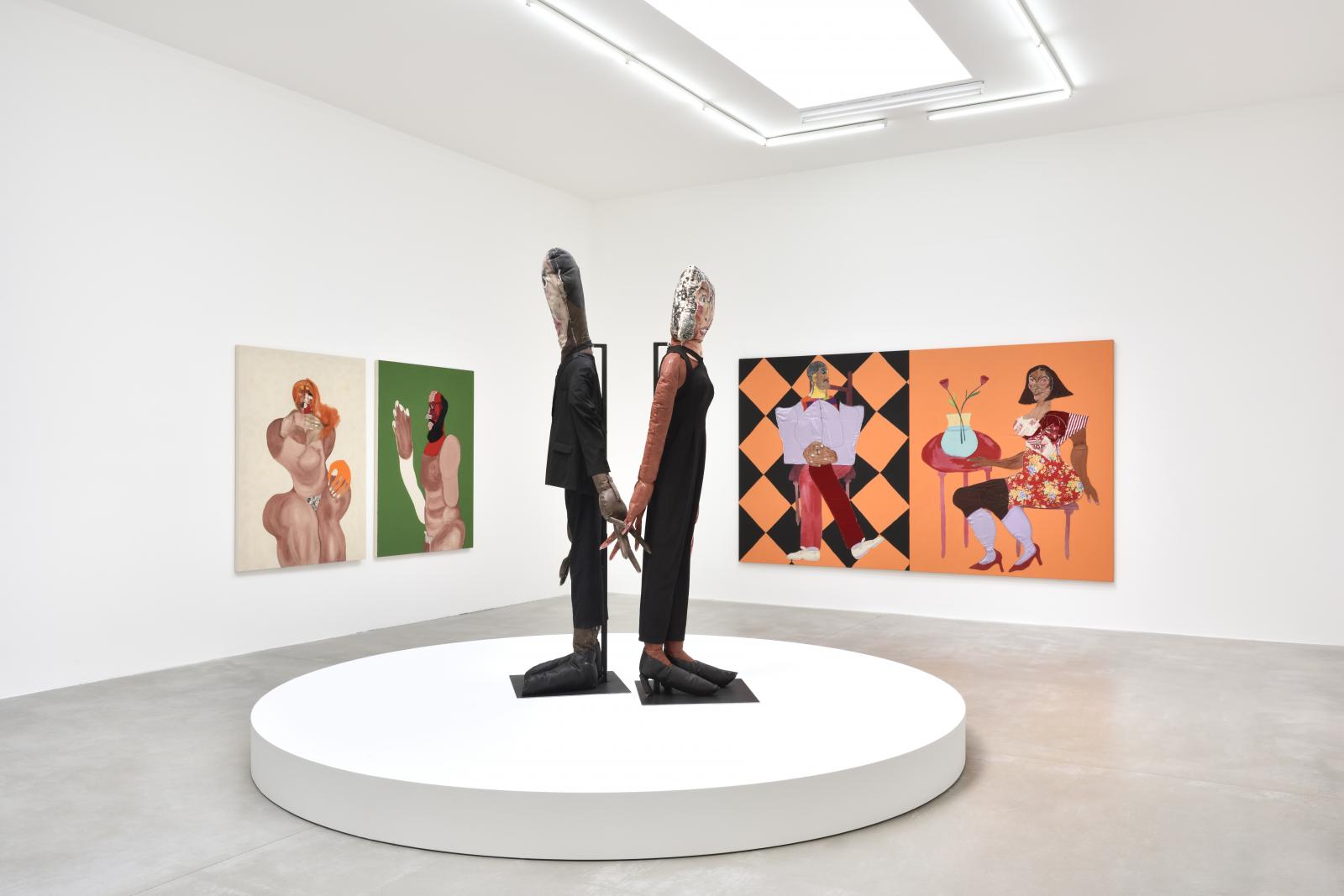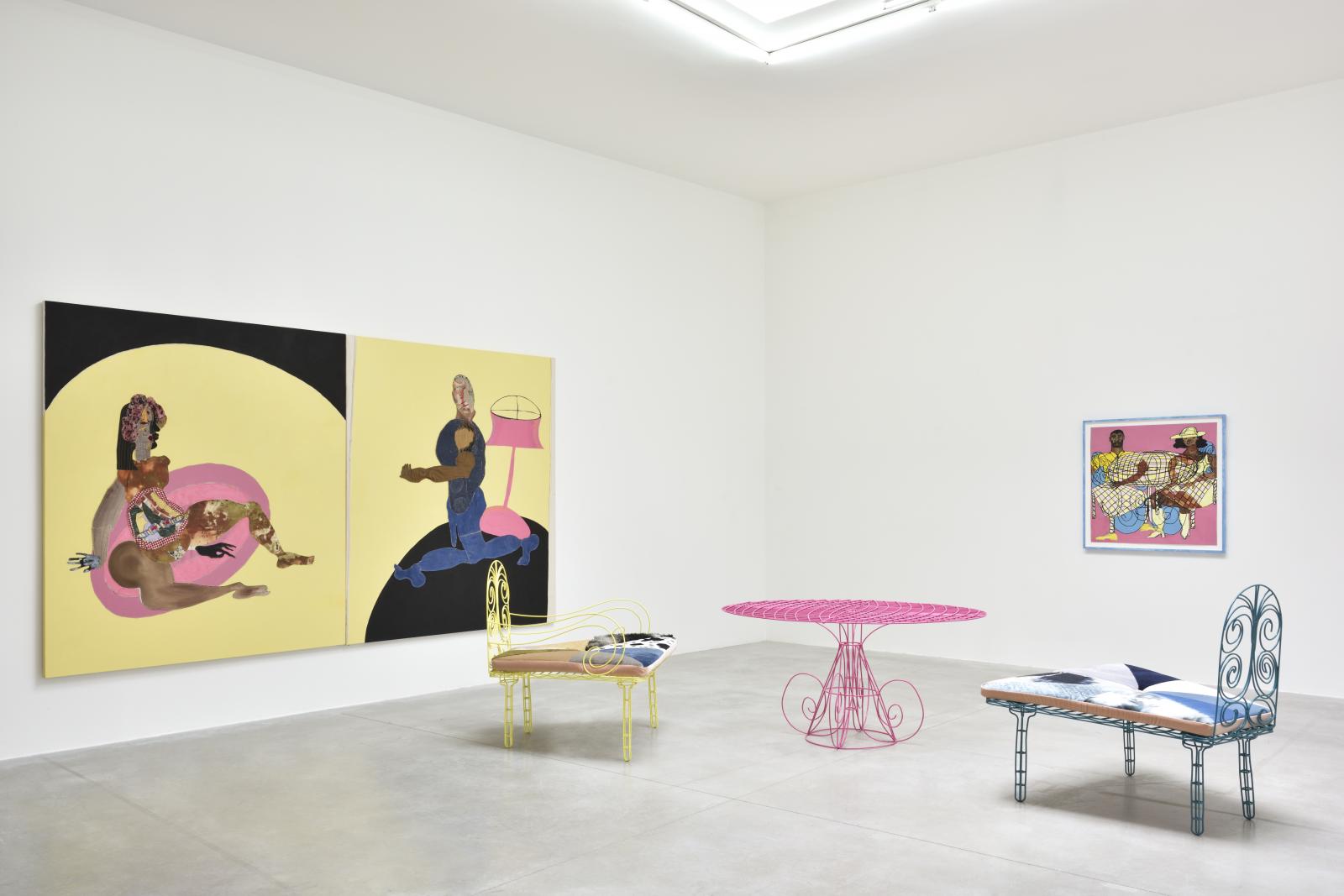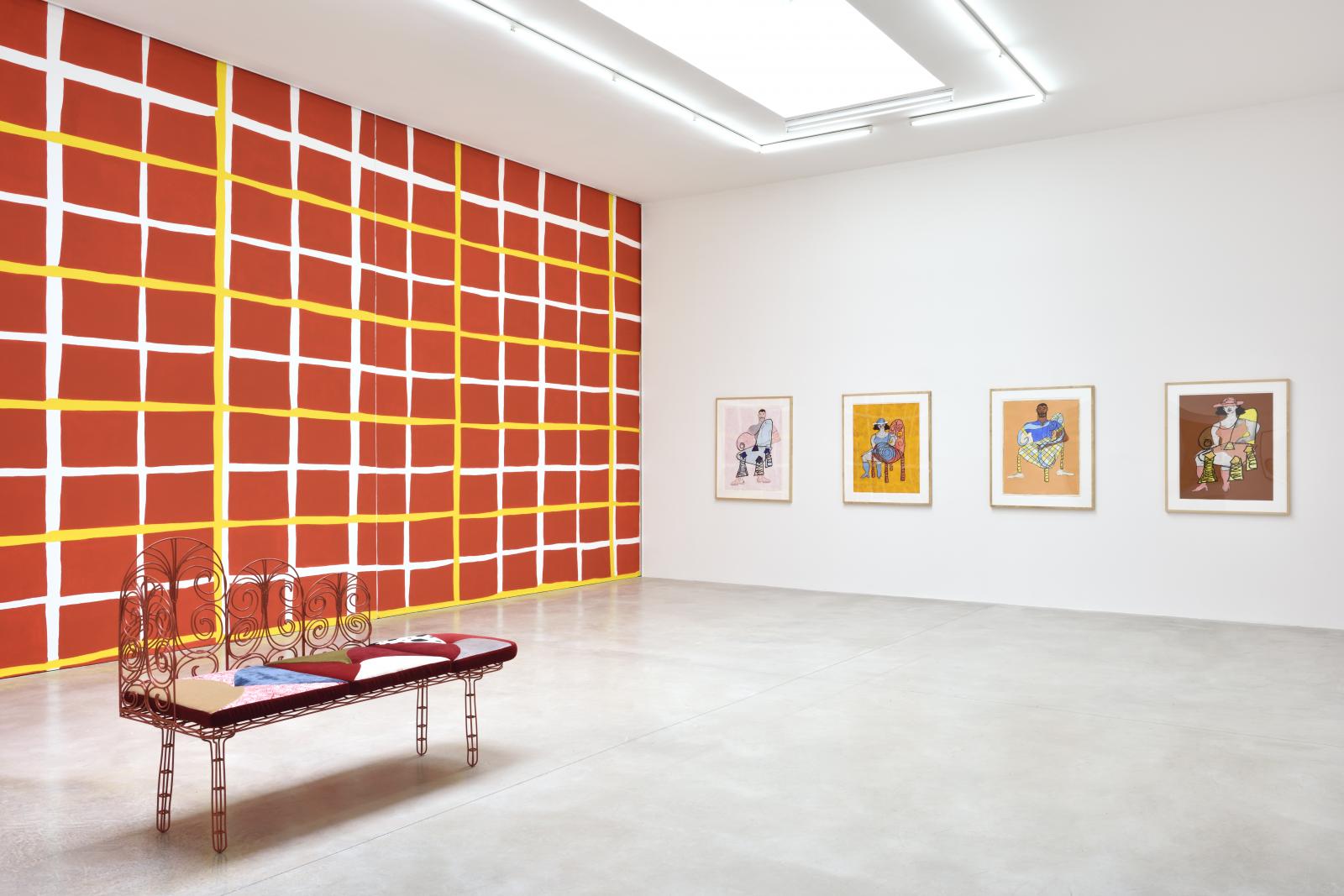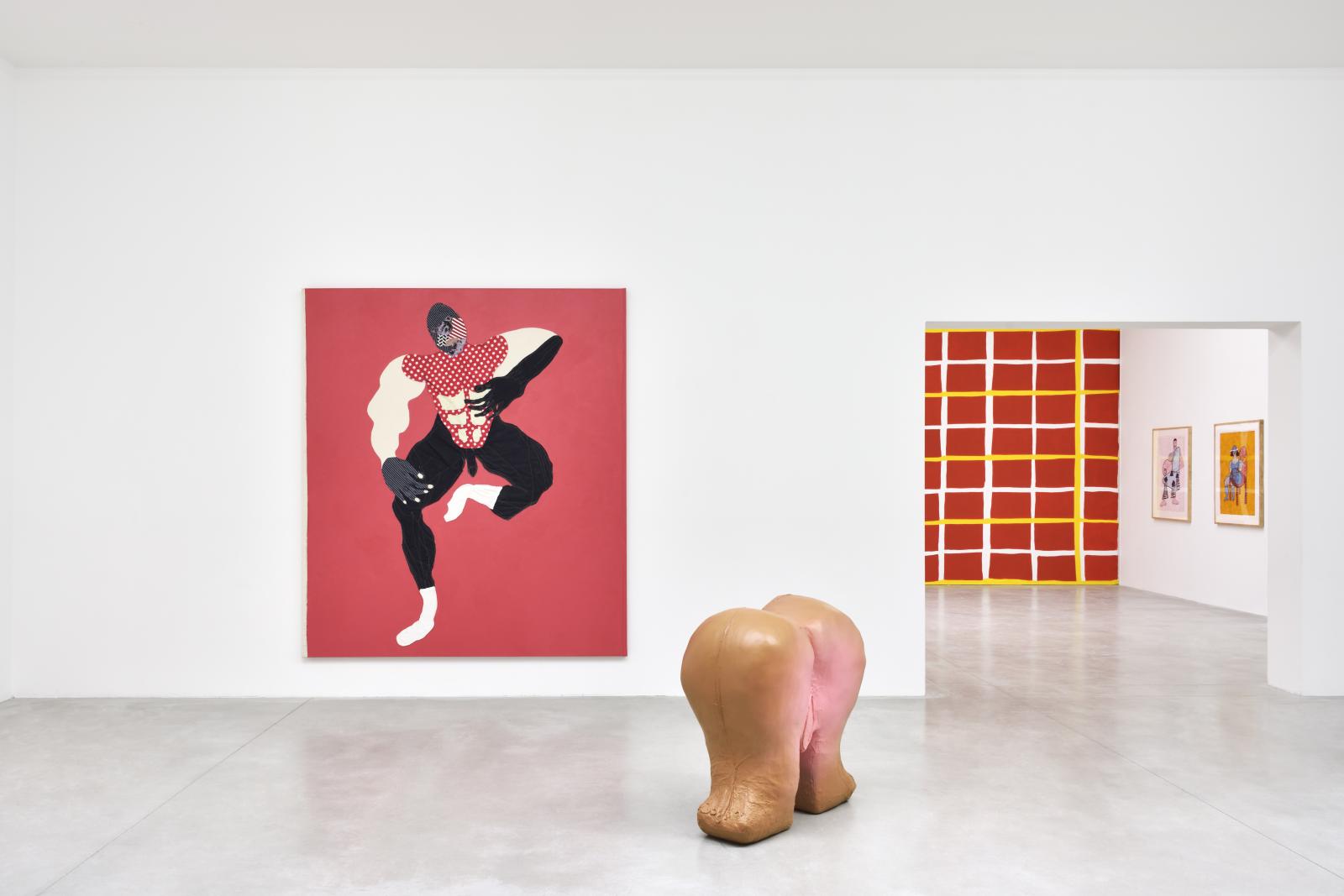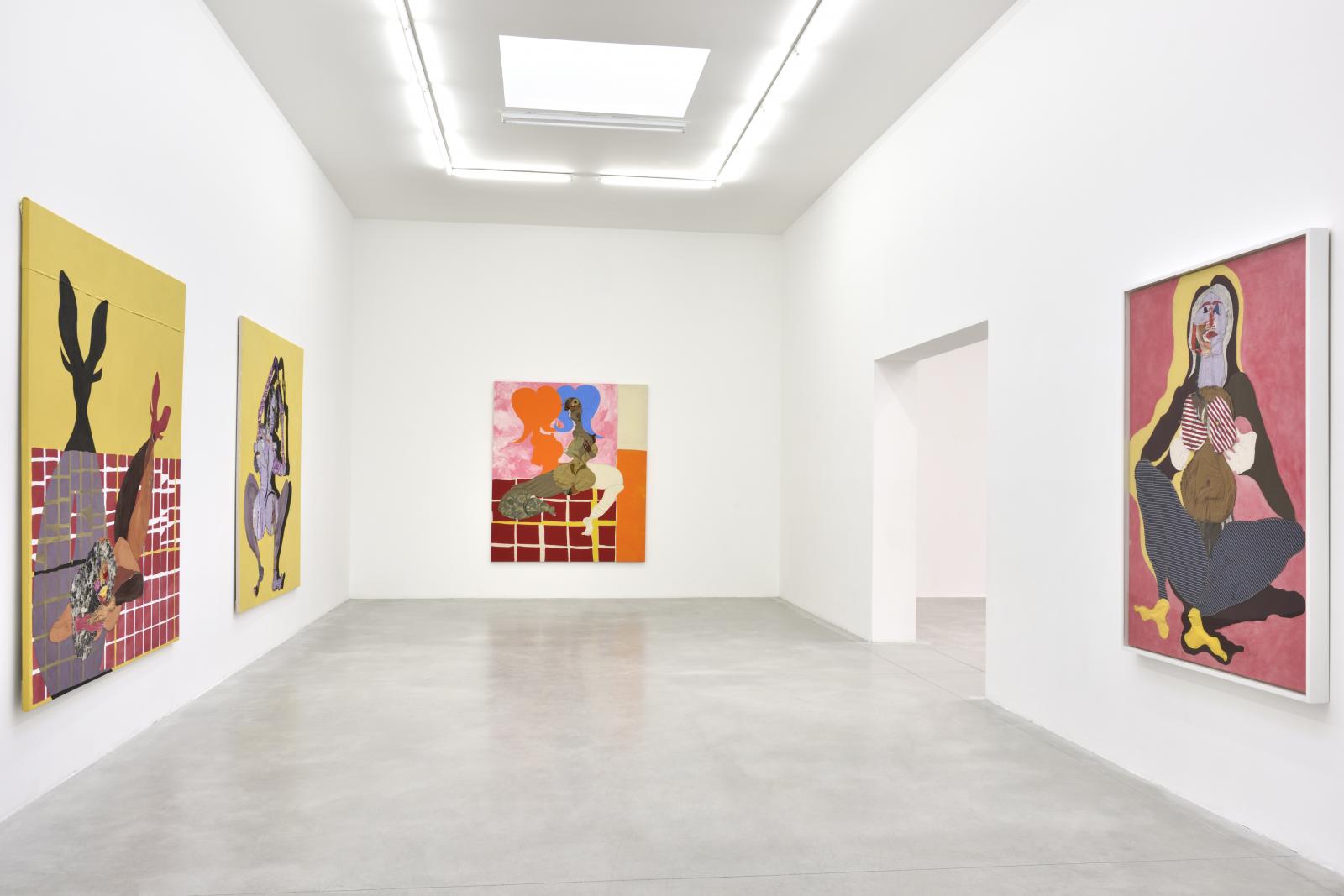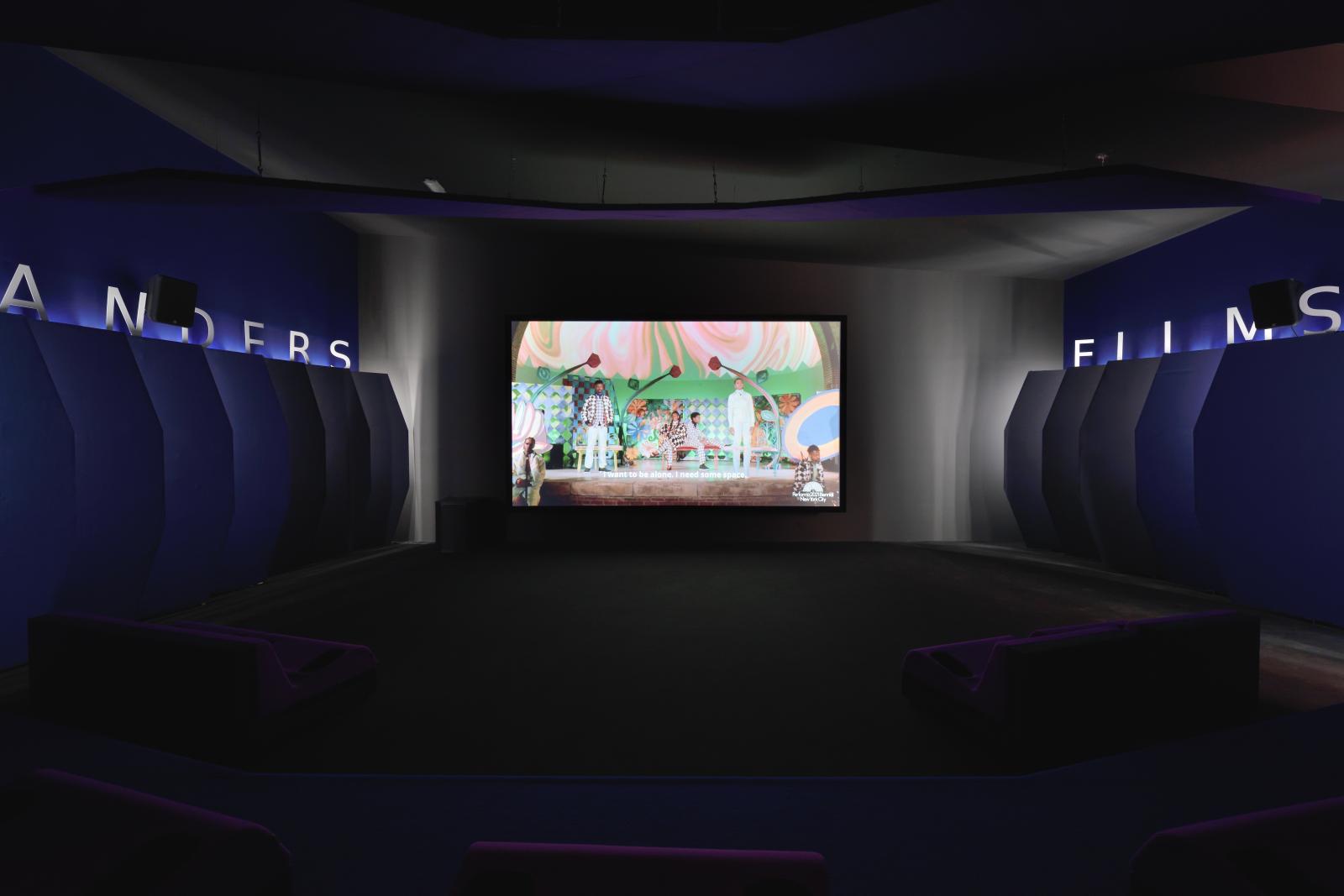Tschabalala Self
Make Room
Tschabalala Self (1990, Harlem). Lives and works between New York & New Haven.
With generous support from Galerie Eva Presenhuber and Pilar Corrias
Tschabalala Self's exhibition continues at Kunstmuseum St.Gallen (Switzerland) from February 25 to June 18, 2023.
Make room to install a young artist’s new paintings.
Make yourself at home. Give her the means to do so.
Painting is this occupation that unfortunately lets itself be prey to all kinds of consumption yet also allows fortunately for all kinds of deep research on community (and therefore universal) imagery.
Against all odds, painting, when stormed blasted with all techniques and knowhow mixed up together, keeps its immense power of attraction.
That it should be the achievement of a young Black-American artist who knows how to summon styles, natural iconography and pictorial means is not a novelty or a paradox, or some finally acquired legitimacy, but the full consciousness of an era that at last restores the order of good things.
Make room for an already bountiful œuvre (the artist’s youth notwithstanding) that convenes in sometimes domestic settings the grand tale of the Black-American peoples in their finery, their uncompromising figures and situations.
Quickly celebrated for her large, vertical compositions and their monochrome backgrounds where Black characters possess their bodies confidently, with men and women delineated as assertive silhouettes that often double up as shadows, Self knows how to put on her side the art of assemblage, sewing, and a bidimensional cubism fond of cutout papers and machine-sewed fabrics.
Is there within great, recent American painting an Abstract Expressionist referent that would be a constant? If that is indeed the case, could it still be nesting there, organizing surfaces into flat colorful areas, whether textured or simply uniform?
Perspective is shortened, nonexistent even when subjects are mercilessly crammed on top. The assemblage of checkerboard patterns, checkers, bricks, and tiled floors, tracing a vague, maybe domestic architectural space allows for an assertive way of inscribing subjects.
And what would she make of Leon Golub, in whose time when everything seemed to be articulated around politics in painting, especially when the monochromatic backgrounds granted front stage to characters in action and to the frontal brutality of the narratives thus described?
Sill (2020) welcomes visitors with a horizontal statement that is literal in that it fully justifies the title of the exhibition. On a hardwood or paved floor, a green floor lamp slightly exits the frame on the left, while on the top right side of the picture a square window opens, from which a red tulip (?) points out. The painting’s heroine is settled in a yellow circular armchair with black accents. She is about to light the lamp. She is one and on one arm and one leg her shadow is dark and on the other couple of limbs it is a pinkish beige. The patchwork of sewn fabric patches builds the figure into a style that is both sewn and drawn, a trademark of the artist’s work.
The assemblage and collage of used fabric patches (that come from her own wardrobe) has a lengthy history within Black-American culture that has now been preserved and is finally recognized. Think about the quilts from Alabama’s Gee’s Bend Black-American community, whose works have become quintessential for the tradition of quilt and folk art. The recycling of fabrics, the intuitive, sophisticated compositions and the mastery of color have made the reputation of artists such as Annie Mae Young or Lorraine Pettway, to only mention a few.
The scene is set, the decor makes room for paintings that unfold over several galleries in succession, offering here a Black model, there a naked couple with obvious, conspicuous sexual attributes.
Carpet, 2020, a diptych, echoes the aforementioned Sill and recreates the same pieces of furniture like the now pink floor lamp (the subject lends itself to this new coloring), the circular armchair that welcomes the female subject with wide open legs, and the pink rug on the left panel that becomes black on the right one. The inversion of yellow/black plays on a figure/ground dialectic while the walls/backgrounds carry the mirrored rug colors.
Make Room to welcome a love scene: a two-panel painting readies an encounter between the two protagonists, for a sexual collaboration that restages even more explicit paintings when it comes to the action that takes place. Here the man is kneeling, his penis still flaccid, he puffs out his alpha male chest, his raised arm an invitation to his future partner who’s beyond his own plane in the elsewhere of the second panel.
Michele Wallace’s Black Macho, and the myth of the Superwoman, published in 1978, stirred up the hornet’s nest of macho conventions inherited from the Black Power movement, and of the marginalization of Black women in old-time clichés assigning them with a framed, coded, constrained femininity. That Michelle Wallace is Faith Ringgold’s daughter, an artist celebrated today as a pioneer of Black-American painting, is no small paradox, since her mother had to fight all her life the dual marginalization of gender and skin color.
Ringgold’s art also borrows from the quilting tradition, with its share of the decorative, ornamentation, and folk traditions blended with political and social subjects. Tschabalala Self is a great admirer of Faith Ringgold with whom she shares the same deep interest for the folk art of her community.
Self’s exhibition that unfolds in the Consortium Museum rooms is articulated on a domestic setup of painting and its inhabitants, showing a hieratic manner that is all the more asserted as it expresses itself in full force on the foreground of the painted surface, with a pure bidimensionalily superimposed on monochromatic backgrounds or bi-chromatic ones, punctuated with vertical, asymmetrical partitions.
These poses, in Father (2019), Blonde (2019), Snake (2020), and Dreamers (2021 —for its male character), take from Antiquity inasmuch as they make use of a nude or partially clothed model, man or woman, as an affirmation of the specific characters of Black bodies.
At least two galleries in the exhibition are devoted to works on paper; they offer—and this is new—seated characters (melded) on chairs with underlined tracing that recall wrought iron garden furniture. This furniture—white tables and chairs—was discovered over the past year (in October 2021) during the Performa biennial in New York, for which the artist had conceived, written and staged a show, Sounding Board, played at the Jackie Robinson Park Bandshell in Harlem. A movie documenting the performance is presented in the gallery mezzanine.
Make Room, Tschabalala Self’s first solo institutional exhibition in Europe deflects, if need be, the pressure she has been subjected to for the last few years, after she found success, and redirects toward mature works where the relationships between the masculine and the feminine are expressed with domestic figures and poses alternating between light and shadow, in full view of us all, no matter what the intimacy and shamelessness embraced by the painted figures.
— Franck Gautherot & Seungduk Kim
